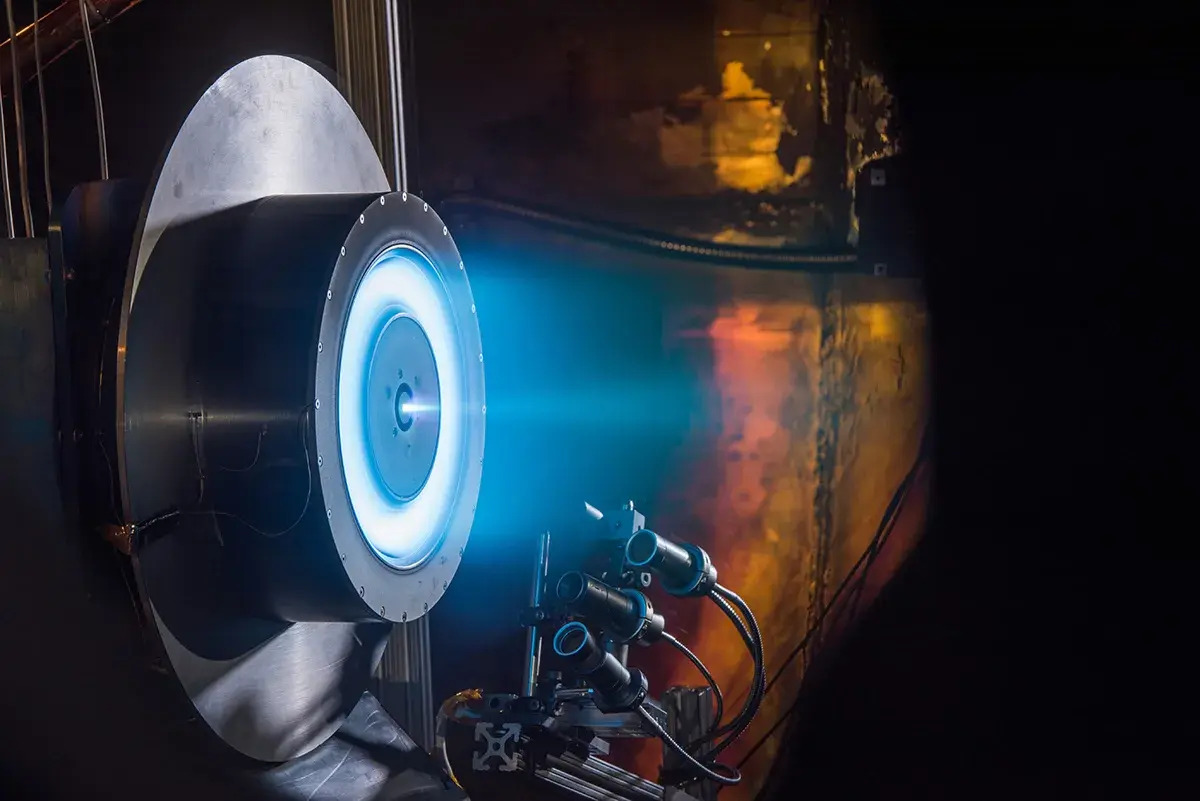
Ion thrusters are a type of propulsion system used in space exploration. Unlike traditional rockets that burn fuel, ion thrusters use electricity to accelerate ions, creating thrust. But how do they work? They generate thrust by expelling ions at high speeds, which pushes the spacecraft in the opposite direction. These engines are incredibly efficient, allowing spacecraft to travel farther with less fuel. Why are they important? Ion thrusters enable long-duration missions, making them ideal for deep space exploration. They have been used in missions like NASA's Dawn spacecraft, which explored the asteroid belt. Curious about more? Let's dive into 22 fascinating facts about these amazing engines!
Key Takeaways:
- Ion thrusters use electricity to propel spacecraft in space, using less fuel and lasting longer than traditional rockets. They're like the energy-efficient cars of space travel!
- While ion thrusters have low thrust and high power needs, they're perfect for deep space missions and exploring distant planets. Exciting advancements in materials and power sources are making them even better for the future!
What Are Ion Thrusters?
Ion thrusters are a type of propulsion system used in space exploration. They work by accelerating ions using electricity, creating thrust. This technology is different from traditional chemical rockets.
- Ion thrusters use electricity to ionize a propellant, usually xenon, creating ions.
- Electric fields then accelerate these ions to high speeds, producing thrust.
- Ion thrusters are highly efficient, using less propellant compared to chemical rockets.
- NASA's Deep Space 1 mission successfully used an ion thruster, proving its effectiveness.
How Do Ion Thrusters Work?
Understanding the mechanics behind ion thrusters can be fascinating. They rely on basic principles of physics to generate thrust.
- Ionization occurs when an electron is removed from a neutral atom, creating a positively charged ion.
- Electrostatic grids accelerate these ions out of the thruster, generating thrust.
- Neutralizers emit electrons to neutralize the ion beam, preventing spacecraft from becoming charged.
- Thrust levels are generally low but can be sustained for long periods, making them ideal for deep space missions.
Advantages of Ion Thrusters
Ion thrusters offer several benefits over traditional propulsion systems. These advantages make them suitable for specific types of missions.
- Fuel efficiency is a major advantage, allowing spacecraft to carry less propellant.
- Long operational life means they can function for years without needing refueling.
- Precision control allows for fine adjustments in spacecraft trajectory.
- Reduced weight of the propellant means more room for scientific instruments.
Challenges and Limitations
Despite their advantages, ion thrusters also face several challenges. These limitations need to be addressed for broader adoption.
- Low thrust levels mean they are not suitable for launching spacecraft from Earth.
- High power requirements necessitate large solar panels or nuclear power sources.
- Complexity in design and operation makes them more difficult to develop and maintain.
- Cost can be higher compared to traditional propulsion systems.
Applications of Ion Thrusters
Ion thrusters have been used in various missions, showcasing their versatility. These applications highlight their potential.
- NASA's Dawn mission used ion thrusters to explore the asteroid belt.
- ESA's BepiColombo mission to Mercury relies on ion propulsion.
- Commercial satellites use ion thrusters for station-keeping and orbit adjustments.
- Future Mars missions may use ion thrusters for efficient travel.
Future of Ion Thrusters
The future looks promising for ion thrusters. Ongoing research aims to improve their performance and reduce costs.
- Advanced materials are being developed to increase thruster durability.
- Higher power sources like nuclear reactors could enable more powerful ion thrusters.
The Future of Space Travel
Ion thrusters are game-changers for space exploration. These engines, using ions for propulsion, offer efficiency and longevity unmatched by traditional rockets. They enable spacecraft to travel farther and faster, making missions to distant planets and asteroids more feasible. NASA and other space agencies are already using ion thrusters in missions like the Dawn spacecraft, which explored Vesta and Ceres.
Understanding ion thrusters helps us appreciate the technological advancements driving humanity's quest to explore the cosmos. These engines represent a significant leap forward, promising to unlock new frontiers in our solar system and beyond. As research continues, expect even more impressive feats from these remarkable propulsion systems.
So, next time you hear about a spacecraft venturing into the unknown, remember the role ion thrusters play in making those journeys possible. The future of space travel looks bright, thanks to these incredible engines.
Frequently Asked Questions
Was this page helpful?
Our commitment to delivering trustworthy and engaging content is at the heart of what we do. Each fact on our site is contributed by real users like you, bringing a wealth of diverse insights and information. To ensure the highest standards of accuracy and reliability, our dedicated editors meticulously review each submission. This process guarantees that the facts we share are not only fascinating but also credible. Trust in our commitment to quality and authenticity as you explore and learn with us.
